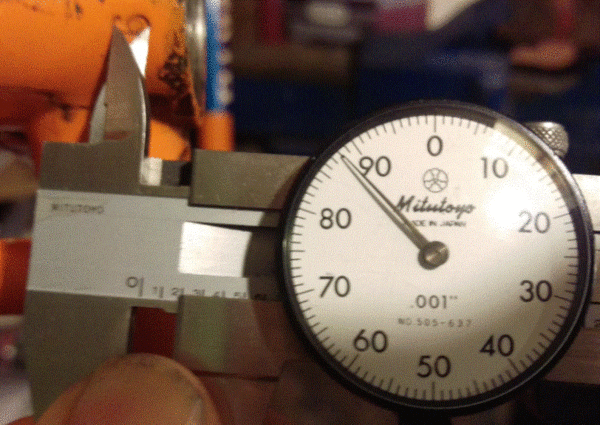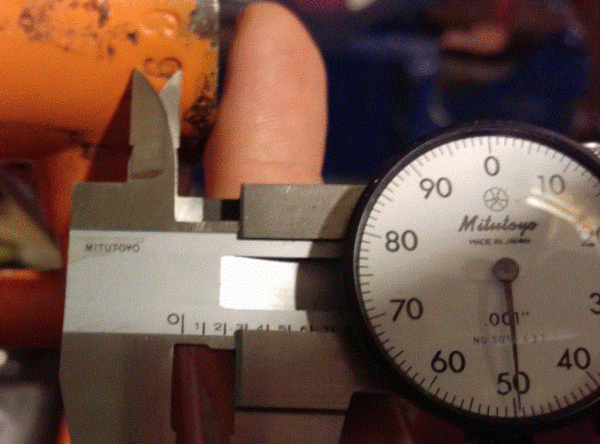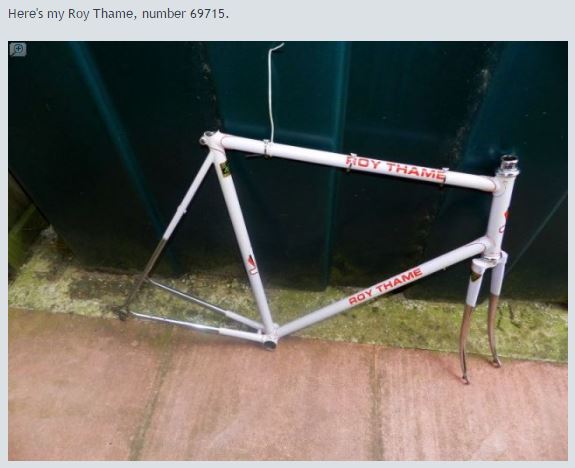torqueless
Senior Retro Guru
Re:
Well, very approximately, 3/16th"=4.8mm 1/4"=6.4mm
Making your reply Shaun as helpful as that of the guy who responded to Doug's query as to whether his seatstays were 5/8" or 9/16", with "15mm"..
Bear with my digression:
Back before routers and their associated templates, the letters on those wooden 'Dunroamin' plaques next to some people's front doors were cut by hand. The cross-section of the incised strokes which formed the letters was a 'v' shape. The letters could be boldened by chiselling a deeper 'v', hopefully leaving the bottom of the 'v' in the same place it had been before within the two-dimensional scheme of the plaque.
'Bolder' looks 'bigger', but the centres of the letters- at the bottom of the 'v's, remains the same size whether the letters are bold or not: v V
And it is just the same with those number punches- they punch numbers which likewise have a 'v' cross-section. Clout them harder and you get numbers that appear 'bigger'. One corollary out of a few possible ones: A lightly punched 1/4" number might appear smaller than a heavily punched 3/16" number, and might even measure smaller too, if you measure from the outside tops of the 'v's instead of from their bottoms.
So it is possible that what CBguy calls '3/16ths' and '1/4' could well be what I am calling '1/8th' and '3/16ths'. If we had the punches themselves to hand to measure, rather than the negative imprints- often full of paint or dirt or both- left behind by them on BB shells, the confusion would disappear.
Well, very approximately, 3/16th"=4.8mm 1/4"=6.4mm
Making your reply Shaun as helpful as that of the guy who responded to Doug's query as to whether his seatstays were 5/8" or 9/16", with "15mm"..
Bear with my digression:
Back before routers and their associated templates, the letters on those wooden 'Dunroamin' plaques next to some people's front doors were cut by hand. The cross-section of the incised strokes which formed the letters was a 'v' shape. The letters could be boldened by chiselling a deeper 'v', hopefully leaving the bottom of the 'v' in the same place it had been before within the two-dimensional scheme of the plaque.
'Bolder' looks 'bigger', but the centres of the letters- at the bottom of the 'v's, remains the same size whether the letters are bold or not: v V
And it is just the same with those number punches- they punch numbers which likewise have a 'v' cross-section. Clout them harder and you get numbers that appear 'bigger'. One corollary out of a few possible ones: A lightly punched 1/4" number might appear smaller than a heavily punched 3/16" number, and might even measure smaller too, if you measure from the outside tops of the 'v's instead of from their bottoms.
So it is possible that what CBguy calls '3/16ths' and '1/4' could well be what I am calling '1/8th' and '3/16ths'. If we had the punches themselves to hand to measure, rather than the negative imprints- often full of paint or dirt or both- left behind by them on BB shells, the confusion would disappear.




